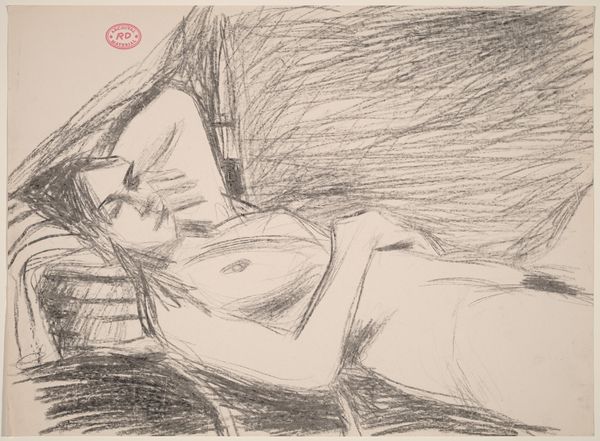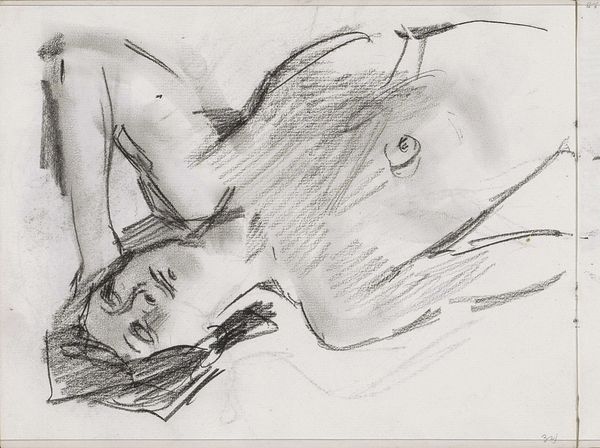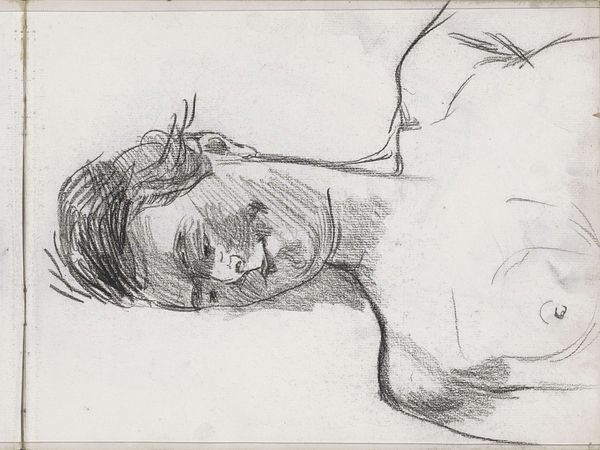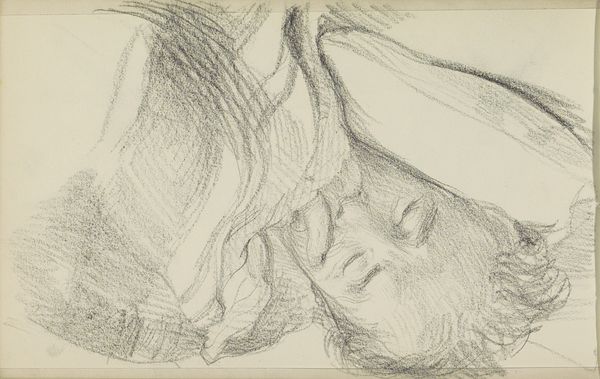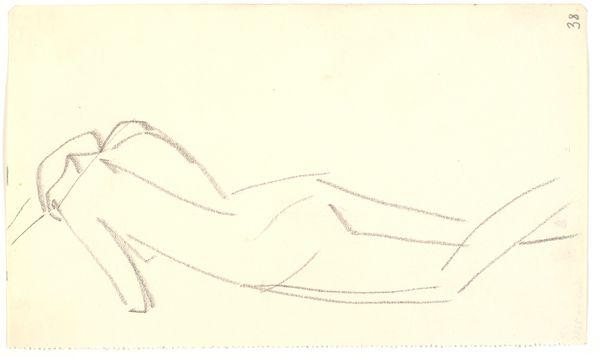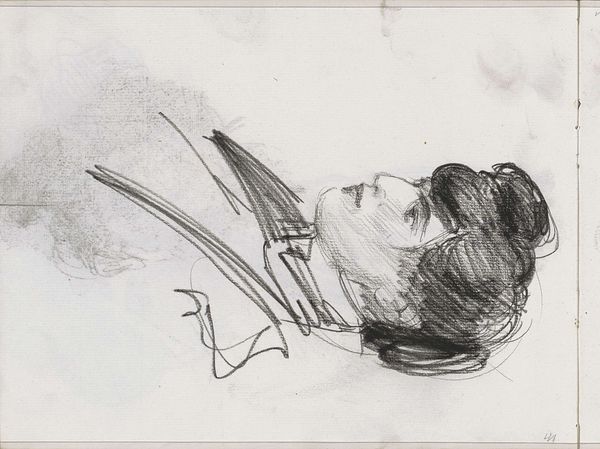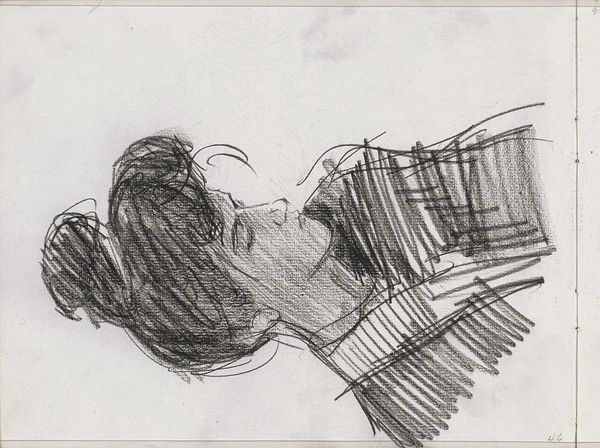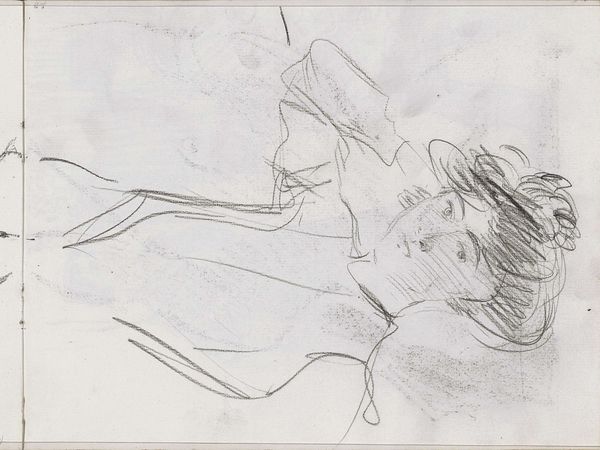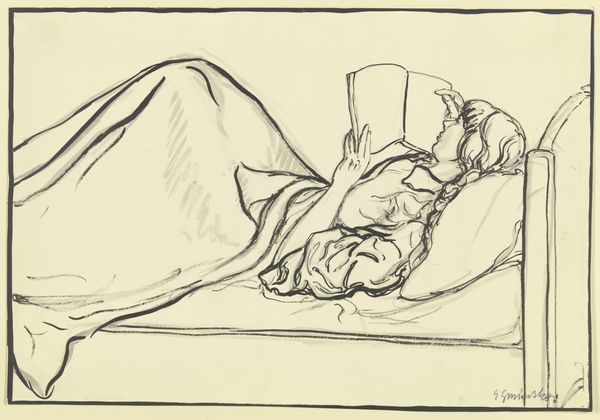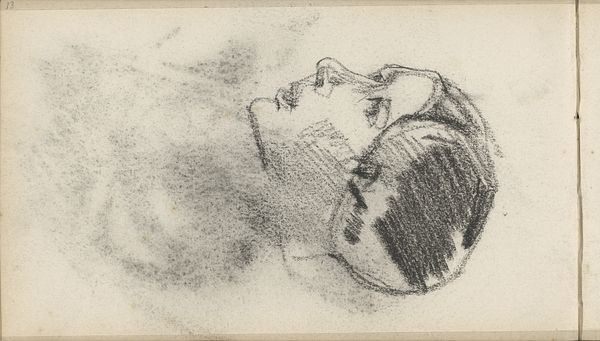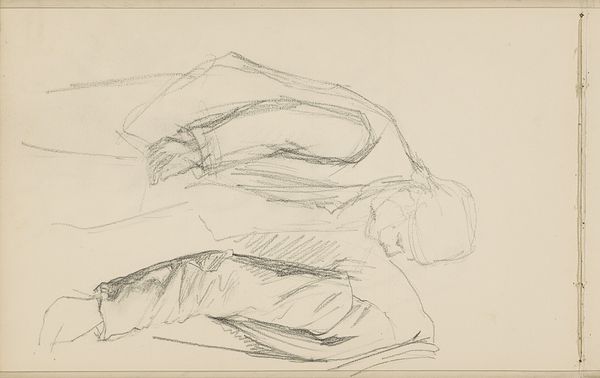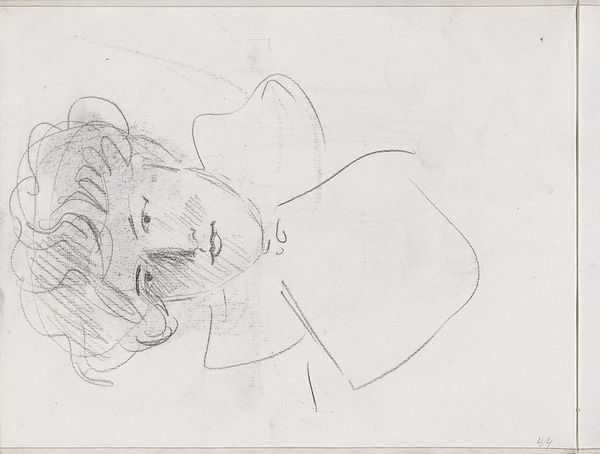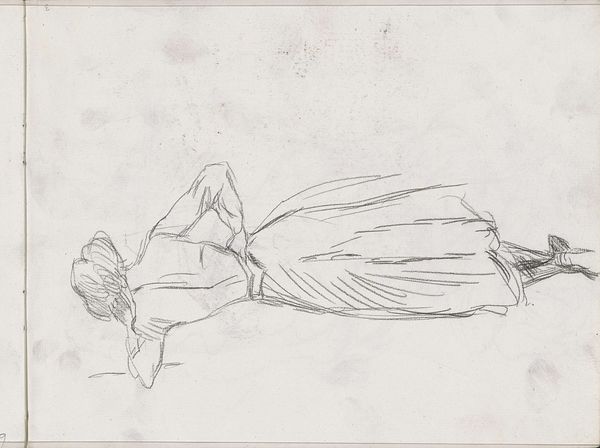
drawing, pencil
#
portrait
#
drawing
#
pencil drawing
#
pencil
#
nude
#
realism
Dimensions: 980 mm (height) x 287 mm (width) (bladmaal)
Editor: This is Kristian Zahrtmann’s “Sovende barn,” or "Sleeping Child," created sometime between 1843 and 1917. It's a pencil drawing of a nude child asleep. There's a certain vulnerability captured here. How would you interpret it? Curator: The image vibrates with a sense of universal innocence. Think about the enduring symbol of the sleeping child across cultures, a representation of purity, potential, and the promise of a future. How does the starkness of the pencil medium affect its symbolic power, in your opinion? Editor: I suppose it adds to the sense of raw vulnerability. Without the distraction of color, you're forced to confront the basic humanity of the subject. Curator: Exactly. And notice the artist's choice not to idealize the child. The form is realistically rendered, the pose natural and unforced. What does that say about Zahrtmann’s intentions regarding the viewer’s connection with the image? Editor: It suggests he wants a genuine, empathetic connection rather than a distanced, aesthetic appreciation. Almost like a direct appeal to our protective instincts? Curator: Precisely! This aligns with a recurring theme in art—the power of innocence to evoke profound emotional responses. It resonates across cultural narratives. Think about images of children in religious iconography, in wartime photography… What feelings arise for you when seeing these echoed? Editor: Sadness and hope simultaneously. It makes you think about both fragility and resilience, especially as expressed through children's bodies in art. Curator: I concur. The "Sleeping Child", presented so simply, taps into this shared visual language of childhood—an image of peace and innocence capable of unlocking layers of profound, timeless meaning.
Comments
No comments
Be the first to comment and join the conversation on the ultimate creative platform.
